As we age, our daily routines can often become monotonous, particularly for elderly individuals residing in nursing homes, assisted living facilities, and senior living communities.
To counter this, it’s crucial to integrate fun activities for elderly in nursing homes, which do more than just entertain.
These activities are pivotal in promoting socialization, cognitive stimulation, and physical activity, essential for the holistic well-being of nursing home residents.
This blog post delves into various innovative and engaging activities, particularly focusing on the artistic and creative endeavors that can be seamlessly incorporated into the daily life of residents in nursing homes and assisted living communities.
By exploring these activities, we aim to enhance the life quality of nursing home residents, ensuring their days are filled with joy and meaningful engagement.
Embracing Art and Creativity
In nursing homes and assisted living communities, the embrace of art and creativity holds immense potential to positively impact the mental and emotional health of elderly residents.
Artistic activities, ranging from traditional arts like painting and crafting to contemporary forms such as digital art, offer nursing home residents a valuable avenue for self-expression and mental stimulation.
These creative endeavors are not just hobbies; they are essential tools that aid in keeping residents’ minds active and spirits vibrant.

Painting
Painting is a cornerstone of art therapy in many nursing homes and assisted living facilities.
It’s an activity that empowers residents to express themselves, creating beautiful artworks from blank canvases.
This process of creation fosters a sense of accomplishment and pride, vital for the self-esteem of nursing home residents.
Whether conducted in a serene art room or amidst the natural beauty of an outdoor setting, painting sessions offer therapeutic benefits and an opportunity for residents to connect with their surroundings.

Crafts
Crafting, another popular artistic pursuit in nursing homes and assisted living communities, includes a variety of activities such as jewelry making, knitting, and personalized greeting card creation.
These crafts not only serve as a medium for creative expression but also as a platform for social interaction among residents, helping to build a sense of community and companionship within the facility.

Music and Dance
Music and dance, transcending the boundaries of age and physical capabilities, are vibrant forms of artistic expression that resonate deeply with nursing home residents.
Assisted living facilities often host music therapy sessions and dance classes, offering residents a joyful and stimulating experience.
These activities are not only enjoyable but also crucial in maintaining cognitive and physical agility.
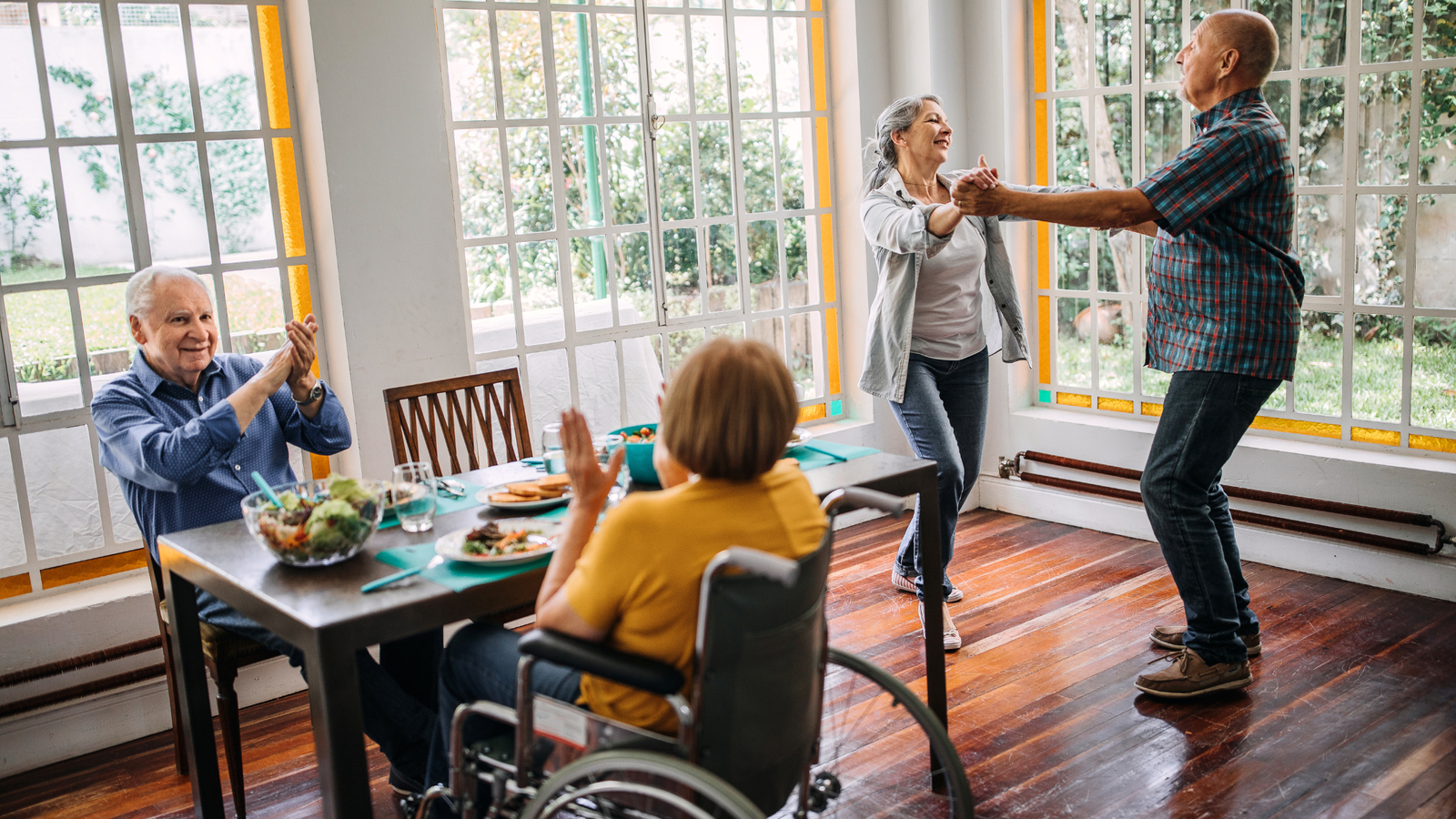
Digital Art
With the advent of technology, nursing homes are increasingly incorporating digital art into their activity repertoire.
From virtual painting programs to immersive art gallery experiences, digital platforms provide nursing home residents with innovative ways to engage in artistic creation, making art more accessible and diverse in its expression.
By embracing art and creativity, nursing homes and assisted living communities significantly contribute to the well-being of their residents.
These artistic activities provide a sense of purpose, encourage self-expression, and foster social connections, effectively bringing joy and vitality into the lives of the elderly.
Through these endeavors, nursing homes can create an environment where creativity flourishes, ensuring their residents lead fulfilling and vibrant lives.

Playing Bingo and Other Games
Playing games in nursing homes, assisted living facilities, and senior living communities offers a delightful way to infuse fun and excitement into the daily lives of elderly residents.
Among these activities, bingo stands out as a universal favorite.
This timeless game is more than just a source of enjoyment; it provides significant cognitive and social benefits, essential for the mental stimulation and community building of nursing home residents.
Bingo’s ease of play makes it accessible to people of all ages, including those with diminished cognitive skills.
It’s a mentally stimulating game that enhances cognitive skills such as attention, memory, and problem-solving.
For nursing home residents, participating in a lively game of bingo can help maintain mental sharpness, a crucial aspect of their overall health and well-being.
The social aspect of bingo cannot be overstated. In many assisted living communities and nursing homes, opportunities for socialization can be limited.
However, bingo offers a perfect platform for residents to interact, fostering a sense of community.
This game encourages residents to engage in friendly competition, share stories, and laugh together, creating a sense of camaraderie and belonging that is vital in senior living communities.
Beyond bingo, a variety of other games are popular in these settings.
Card games like bridge, poker, and rummy are excellent for those who enjoy strategic play and friendly competition.
These games not only entertain but also engage the residents’ cognitive abilities, promoting mental stimulation.
Board games such as chess, Scrabble, and Monopoly are also prevalent in assisted living facilities, providing both mental challenge and social interaction, essential components of a vibrant community life.
Physical activities are equally important in these communities.
Games that combine physical activity with entertainment, such as bowling, bean bag toss, or Wii Sports, are increasingly popular in nursing homes and senior living communities.
These games are designed to be inclusive, accommodating the physical capabilities and limitations of the residents, ensuring everyone can participate and enjoy themselves.
Playing games in nursing homes goes beyond the aspect of competition.
It is fundamentally about enhancing the quality of life for the elderly.
These activities offer something to look forward to, fostering an atmosphere of joy and engagement.
The excitement of winning in bingo, the intellectual stimulation from a strategic card game, or the physical benefits of a bowling match—all contribute to uplifting the spirits and enhancing the well-being of nursing home residents.
In summary, integrating a variety of games, including bingo, in nursing homes and assisted living facilities plays a crucial role in providing mental stimulation, physical activity, and opportunities for social engagement.
These activities are pivotal in creating a lively, interactive, and joyful environment, enriching the lives of residents in these communities.

Gentle Exercise and Movement
Gentle exercise and movement are essential for maintaining the overall health and well-being of elderly individuals in nursing homes and assisted living facilities.
These activities, tailored to the residents’ physical capabilities, offer a myriad of benefits including improved flexibility, increased strength, enhanced balance, and a reduced risk of falls.
More than just promoting physical health, they contribute significantly to mental and emotional well-being, a key aspect of care in senior living communities.
Chair Exercises
Chair exercises are a popular and inclusive form of gentle exercise in nursing homes.
Designed for individuals with limited mobility or those using wheelchairs, these exercises encompass arm stretches, leg lifts, and gentle twists.
They help in promoting flexibility and muscle strength, making them ideal for seniors with physical limitations.
Conducted either individually or in groups, these exercises also provide an opportunity for socialization and building camaraderie among fellow residents.
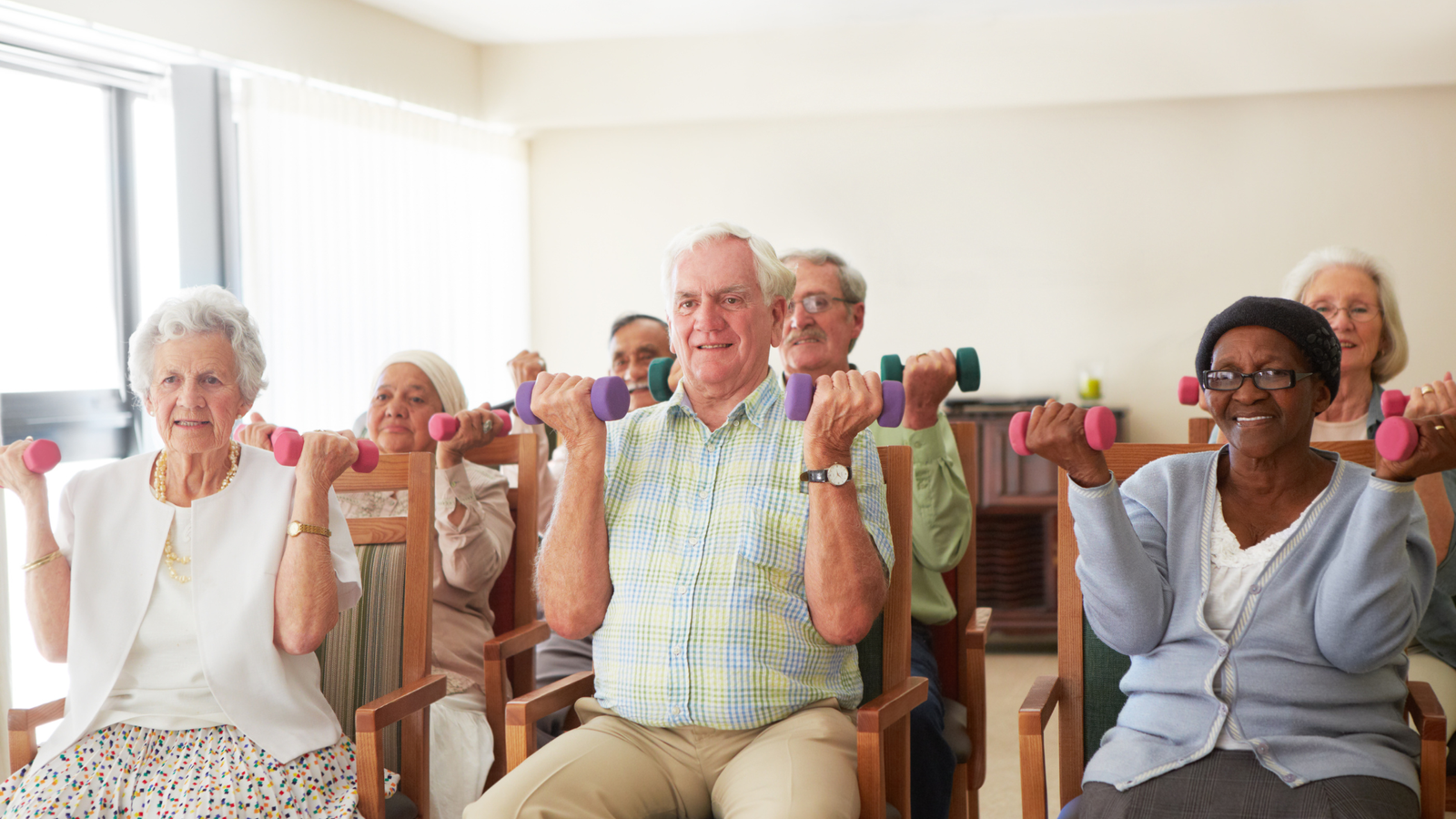
Walking or Strolling
Walking or strolling, especially in the inviting outdoor spaces of many nursing homes, offers a pleasant form of physical activity.
Residents can enjoy the benefits of fresh air and nature’s scenery, positively impacting their mental health and well-being.
For facilities without outdoor access, indoor walking programs or treadmills provide a great alternative, ensuring that all residents have the opportunity to stay active.
Yoga and Tai Chi
Yoga and tai chi are beneficial activities for elderly residents, focusing on slow, controlled movements and deep breathing.
These exercises, often a part of the exercise program in assisted living facilities, promote relaxation, flexibility, and balance.
Adaptable to various levels of physical ability, they are excellent for improving body awareness and fostering a sense of peace and tranquility in nursing home residents.

Dance Classes
Dance classes in nursing homes are a lively and effective way to incorporate gentle exercise.
Ranging from ballroom to line dancing, these classes improve cardiovascular health, coordination, and flexibility.
They offer residents a fun way to stay active, enhancing their physical health and boosting their mood in a community-focused environment.
By integrating gentle exercise and movement into the daily routines of nursing home and assisted living residents, these facilities create an environment that supports physical health, elevates mood, and enhances the overall well-being of their elderly residents.

Music Therapy for Relaxation and Joy
Music therapy in nursing homes is a transformative tool that brings relaxation, joy, and a host of benefits to the elderly.
It’s a key component of the holistic care approach in many assisted living facilities and senior living communities, enhancing the quality of life of residents through the power of music.
Listening to Music
Incorporating music into daily routines is a common practice in nursing homes.
It helps reduce stress, promote relaxation, and uplift moods.
Soothing melodies, be it soft classical music, gentle jazz tunes, or nostalgic songs, create a calming atmosphere in common areas and during meal times, helping residents to relax and reminisce.

Singing and Sing-alongs
Singing along to familiar tunes is a delightful and engaging activity for nursing home residents.
These sing-alongs foster a sense of camaraderie and unity, evoking nostalgia and cherished memories.
They serve as a form of self-expression and provide an opportunity for residents to connect and engage with each other, enhancing the community spirit within the facility.
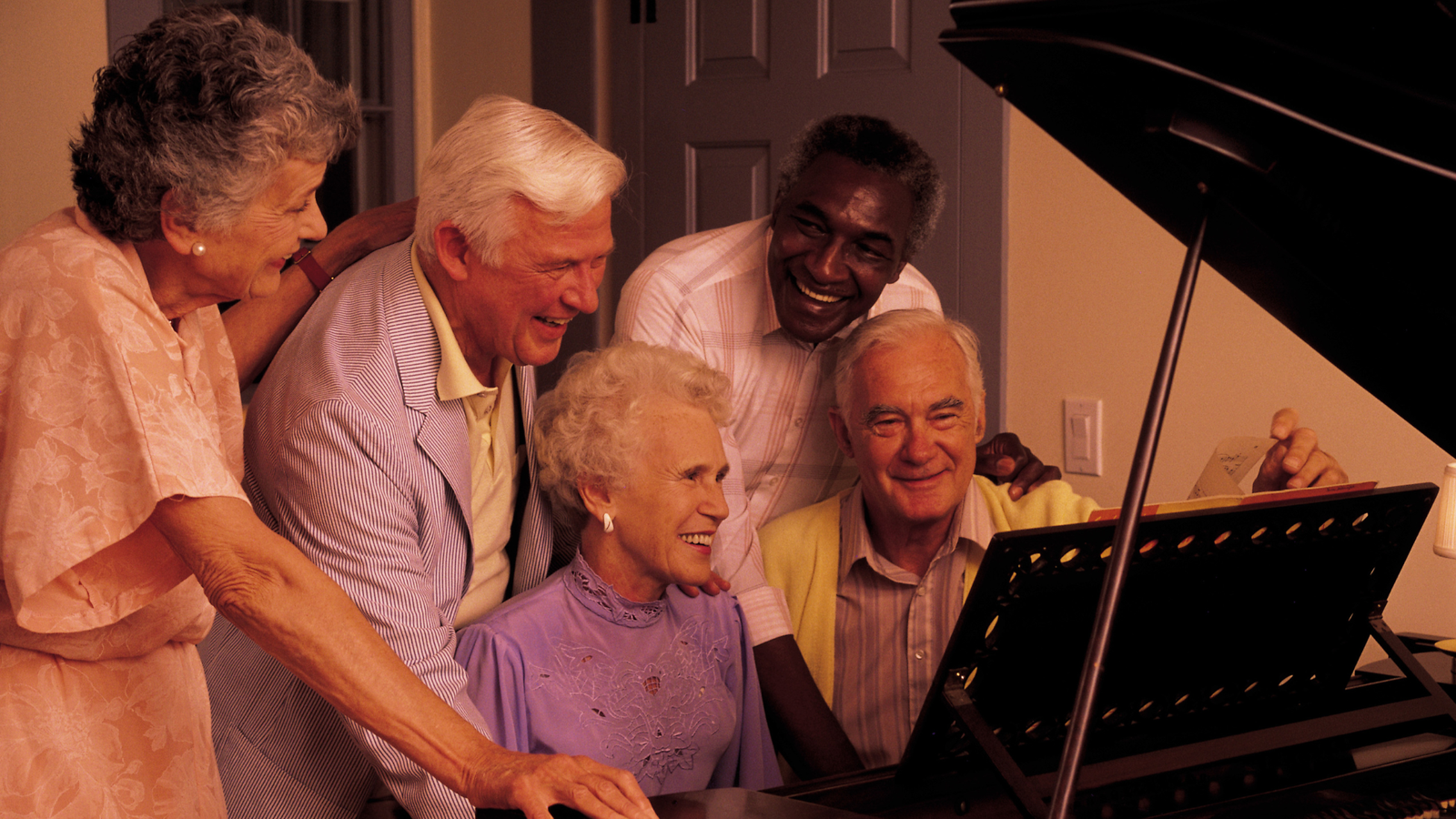
Learning to Play Instruments
Learning to play musical instruments is another facet of music therapy in nursing homes.
Facilities often offer music lessons or have volunteers teaching residents instruments like the piano, guitar, or drums.
This not only stimulates the brain but also instills a sense of accomplishment and pride, regardless of age.
Personalized Playlists
Creating personalized playlists for residents is a thoughtful aspect of music therapy.
These playlists, filled with meaningful songs, can transport residents back to significant moments in their lives, providing comfort and joy.
This practice recognizes the importance of individual preferences and the powerful connection between music and memories.
Physical and Cognitive Benefits
Music therapy also offers physical benefits.
It improves coordination, promotes movement, and enhances cognitive function.
Simple activities like tapping feet or clapping hands to the rhythm are gentle forms of exercise that improve motor skills and physical well-being.
Incorporating music therapy into the daily routines of nursing home residents can profoundly impact their lives.
Whether through listening, singing, or playing instruments, music therapy uplifts spirits, stimulates minds, and fosters meaningful connections, making it an invaluable part of the care in nursing homes and assisted living facilities.
Reconnecting Through Technology
Technology has increasingly become a vital element in the lives of elderly individuals, especially in nursing homes and assisted living communities.
It plays a crucial role in reconnecting residents with their families, friends, and the broader community, overcoming physical limitations and distances.
The integration of technology in these settings, from video calls to social media and virtual reality, offers numerous avenues for residents to stay connected and engaged.

Video Calls
Video calls have revolutionized the way nursing home residents interact with their loved ones.
Platforms like Skype, FaceTime, and Zoom enable real-time visual and audio communication, bringing families closer despite physical separation.
These calls are more than just conversations; they’re lifelines that provide emotional support, reduce feelings of isolation, and strengthen bonds with family members and friends.
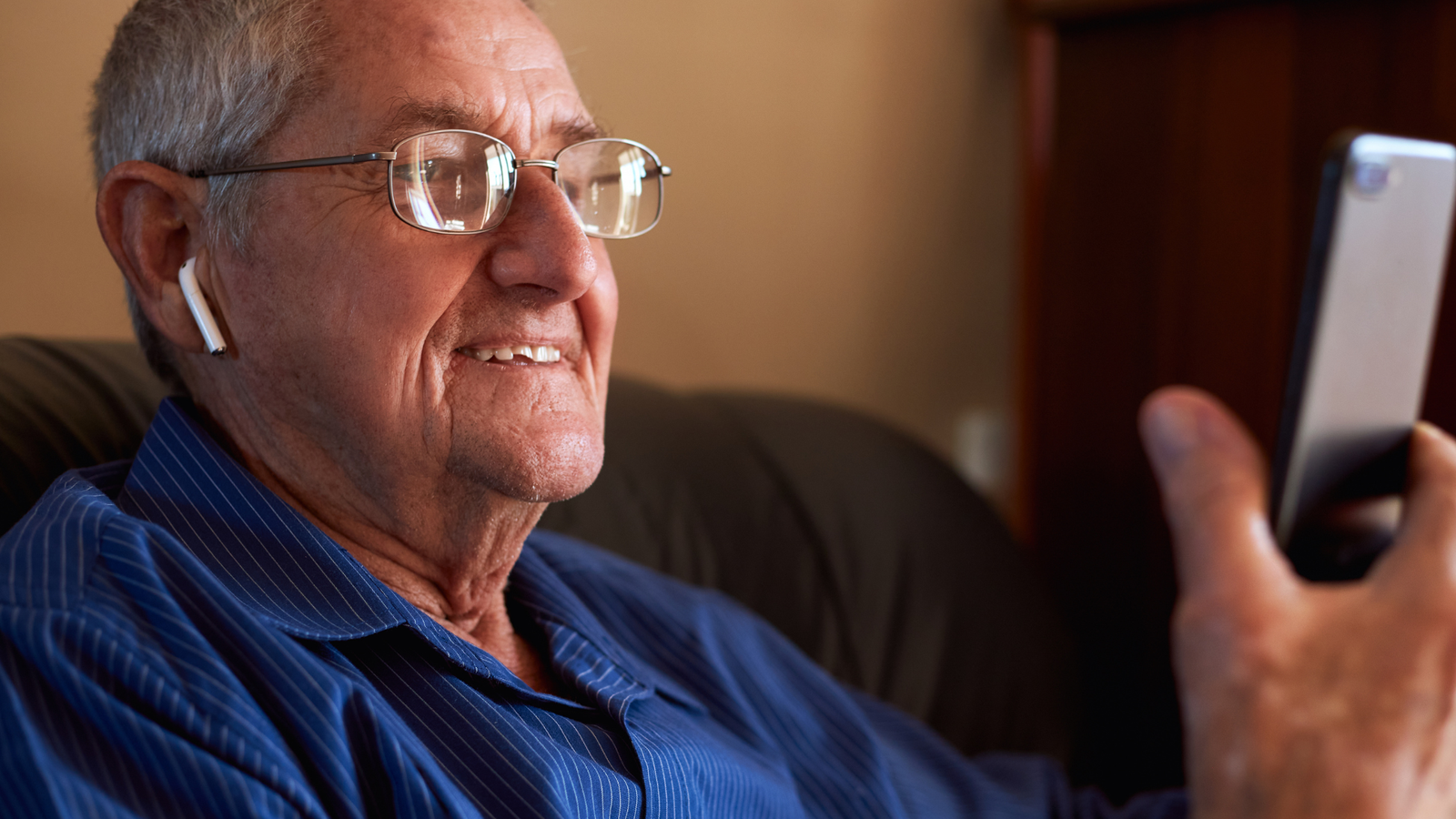
Social Media
Social media platforms have emerged as powerful tools for nursing home residents to stay connected with the outside world.
By creating profiles on Facebook, Instagram, or other platforms, residents can stay informed, share their experiences, and engage with online communities.
This digital engagement is particularly beneficial for residents with limited mobility, allowing them to participate in social and cultural dialogues from their nursing home or assisted living facility.
Online Learning and Exploration
The internet also offers endless opportunities for nursing home residents to explore new hobbies and skills.
Online classes and tutorials on platforms like YouTube cover a wide range of interests, from arts and crafts to gardening and cooking.
These resources enable residents to learn at their own pace and pursue new or long-forgotten passions.

Virtual Reality Experiences
Virtual reality (VR) technology in nursing homes provides a unique and immersive way for residents to explore the world.
Through VR headsets, they can virtually visit exotic locations, landmarks, and even delve into underwater adventures, all from the safety and comfort of their living facilities.
This technology not only entertains but also stimulates cognitive function and provides a sense of wonder and exploration.
In embracing these technological advancements, nursing homes and assisted living communities are not just providing entertainment; they are opening doors to new worlds, experiences, and connections for their residents.
This embrace of technology enhances the lives of elderly individuals, helping them stay connected, engaged, and mentally active.
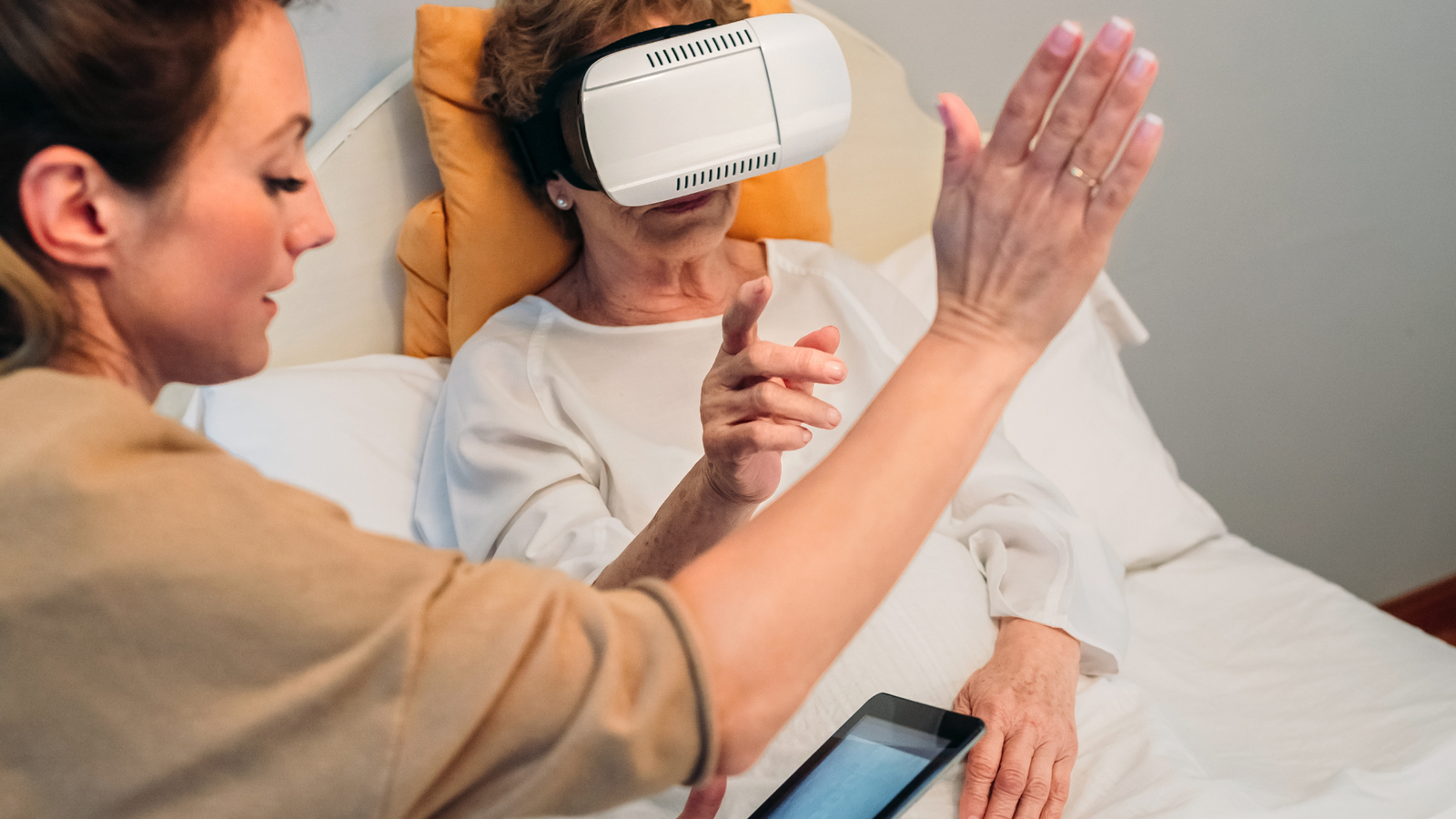
Enjoying Outdoor Spaces and Nature
The presence of outdoor spaces in nursing homes plays a significant role in enhancing the well-being of residents.
The fresh air, sunlight, and exposure to the natural environment offer numerous health benefits, including mental and physical rejuvenation.
Gardens and Outdoor Areas
Many nursing homes boast beautifully landscaped gardens and outdoor areas where residents can enjoy nature’s tranquility.
These spaces serve as serene havens for relaxation, contemplation, and connection with the natural world.
Activities like leisurely strolls, sitting on a bench enjoying the scenery, or simply soaking up the sun provide essential sensory stimulation and a peaceful escape from daily routines.
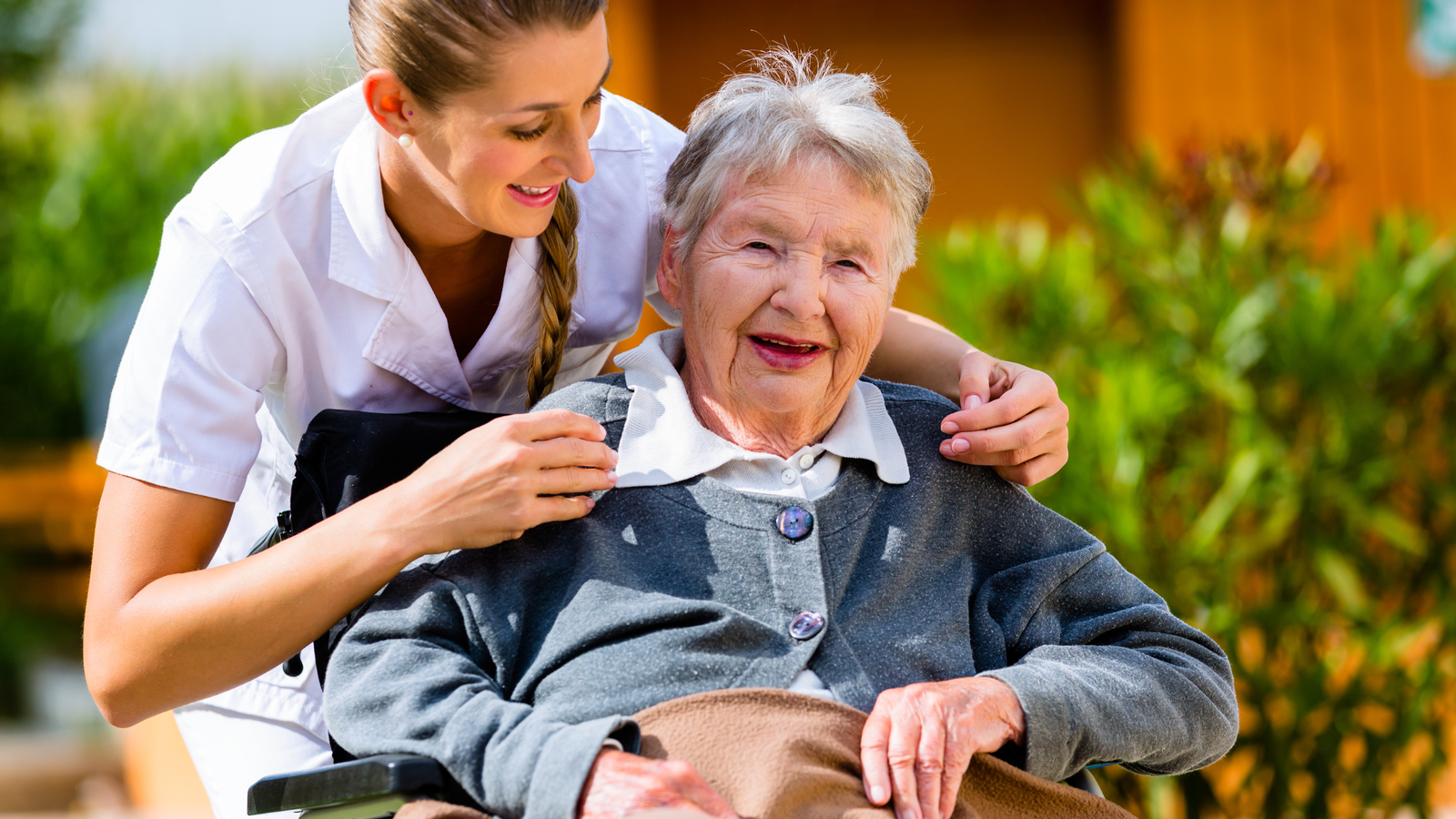
Gardening Activities
Gardening is a particularly rewarding activity offered in many nursing homes.
It allows residents to engage in physical activity, nurture plants, and witness the beauty of nature’s growth.
Gardening offers a sense of accomplishment and purpose, and the act of caring for plants can be incredibly therapeutic for elderly individuals.

Birdwatching and Nature Walks
Organizing birdwatching activities or nature walks is another way to connect residents with the outdoors.
Setting up bird feeders near communal areas can attract various bird species, offering a peaceful and engaging pastime.
Guided nature walks, led by staff or volunteers, provide educational opportunities about local flora and fauna, enriching residents’ outdoor experience.
Outdoor Events and Socialization
Hosting outdoor events, such as picnics or garden parties, is an excellent way for nursing home residents to socialize and enjoy nature collectively.
These events foster community spirit, allow residents to build relationships, and create enjoyable, memorable experiences.
By prioritizing access to outdoor spaces and nature-related activities, nursing homes can significantly enhance the quality of life for their residents.
The benefits of being in nature, combined with physical activity and social interaction, contribute to a holistic approach to elderly care, promoting health, happiness, and a deepened connection to the world around them.
Bringing Vibrancy to Everyday Life in Nursing Homes
In conclusion, the integration of fun and engaging activities in nursing homes is not just about entertainment; it’s about enriching the lives of the elderly, fostering a sense of community, and promoting overall well-being.
From embracing art and creativity, indulging in music therapy, to staying active through gentle exercises, these activities offer varied avenues for residents to express themselves, stay connected, and enjoy life’s simple pleasures.
The joy of painting, the camaraderie in craft-making, the nostalgia evoked through music, and the cognitive stimulation from games like bingo are more than just pastimes.
They are vital components of a holistic approach to elder care, one that recognizes the importance of mental, physical, and emotional stimulation in maintaining a high quality of life.
Moreover, the embrace of technology in reconnecting residents with their loved ones, alongside the therapeutic benefits of nature and outdoor activities, demonstrates a forward-thinking approach to elder care.
These elements ensure that life in nursing homes is not about mere sustenance but about thriving, growing, and experiencing joy and fulfillment.
As we continue to explore and implement these creative ideas, we not only bring fun back into the routine of nursing home residents but also reaffirm our commitment to their dignity, happiness, and well-being.
It is through these varied and meaningful activities that we can truly celebrate and honor the lives of our elderly, making their golden years as enriching and vibrant as possible.